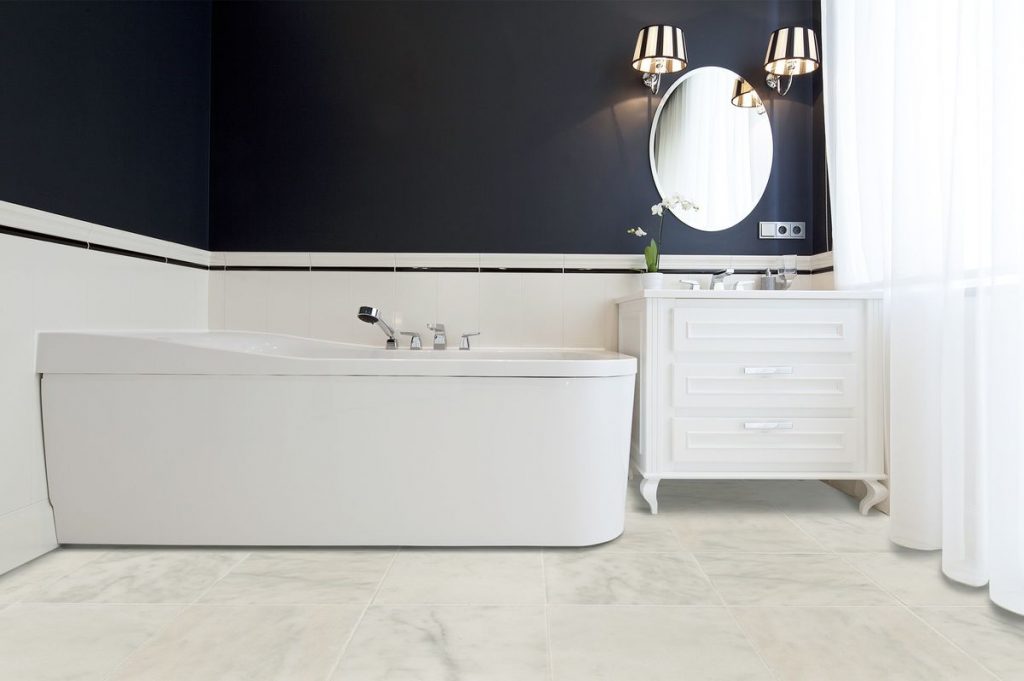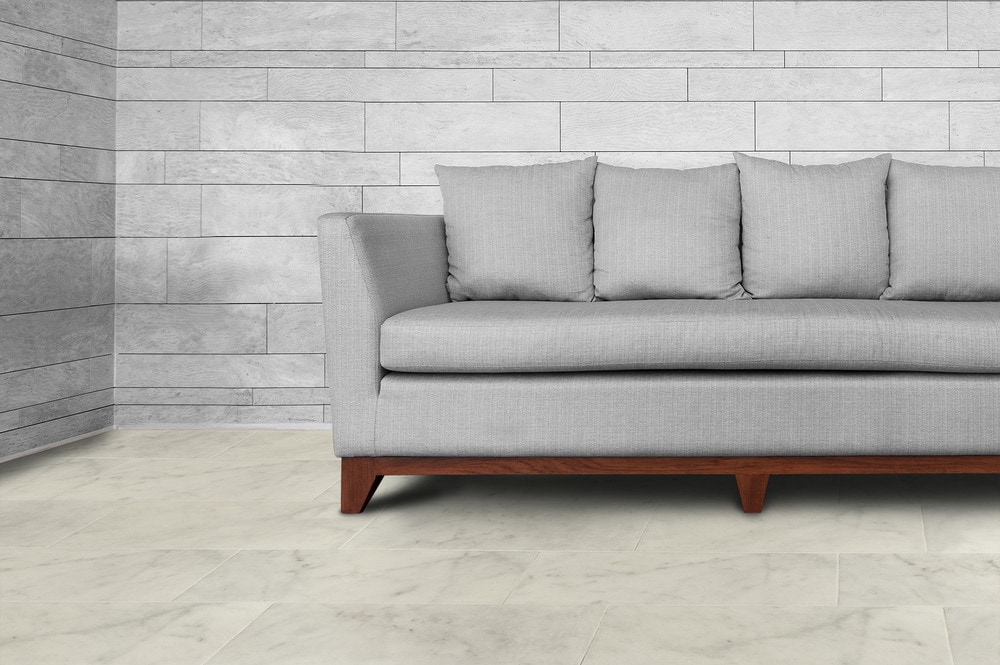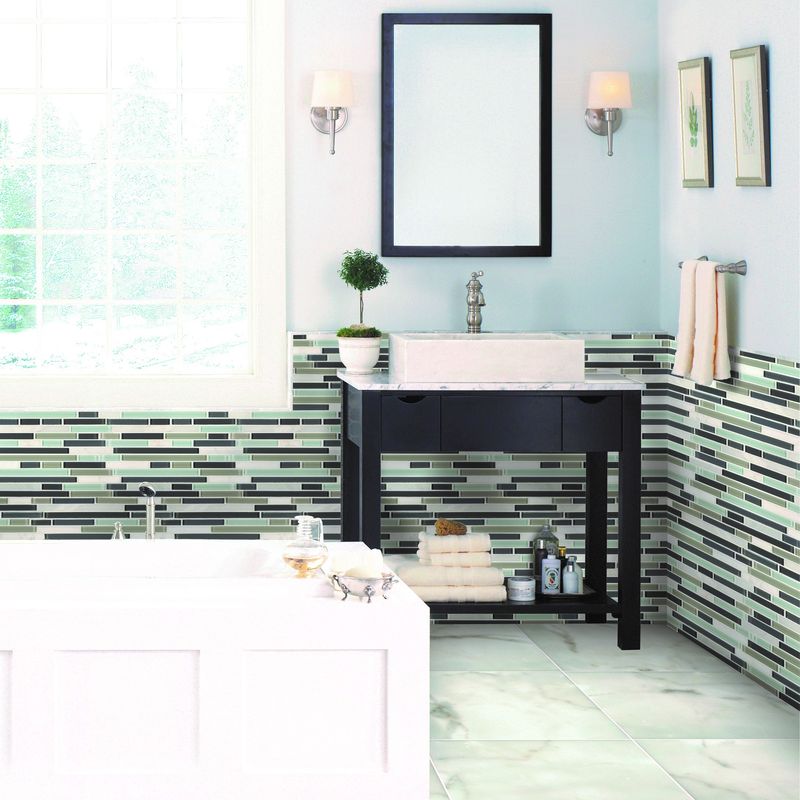Types of Marble Tile: How are They Different?

Marble tile has different types and comes in a wide range of colors, making it an ideal choice for accentuating any type of decor. In addition to the multitude of hues available, the differences in vein patterns and grain distinguish various types of marble from one another. To the untrained eye, it might be difficult to differentiate the types of marble. With so many options to choose from, it’s helpful to do some research so you make the best decision for your renovation project.
Depending on the type of marble used, it can add sophistication to a kitchen or an artistic flair to a foyer. The abundance of marble tile patterns and types available allows you to complement or contrast hues or create distinctive mosaic patterns on floors and walls with this material. No matter which type you decide to install, marble tile adds a timeless visual impact wherever it’s placed.
Here are some popular marble options:
Carrara Marble Tile

This is generally white, gray or blue-gray and commonly used in sculpture and building decor. Its veining is more linear and can either be small and fine or soft and feathery, although it can be dramatic. One of the more readily available marble options, Carrara is one of the most commonly used marbles in residences. Since it can have a stark, pristine whiteness, use these marble tiles in bathrooms where they add an airy and clean feel.
Statuary Marble Tile
A sister stone to Carrara, statuary marble features a uniform background and light gray tones with distinctive and more dramatic veining. Its semi-translucent white background gives it a shiny, glossy feel, reflects light, and provides a radiant finish that enhances any room.
Calacatta Marble Tile

“Due to its rarity, many people consider Calacatta a luxury stone.”
Often misspelled as Calcutta, Calcata, and Calacata, this marble tile is also commonly mistaken for Carrara marble. Even though Calacatta marble is often quarried in the Carrara region of Italy and shares similarities with Carrara marble, such as their white coloring with gray veining, they have several distinct characteristics that set them apart.
Calacatta marble is generally white with dark veining in large, thick patterns. For some homes, a marble kitchen floor can add a striking look when paired with stainless steel. This marble can also work a treat when used with the white porcelain of a bathroom. Since it is rarer than Carrara, many people consider Calacatta a luxury stone. Calacatta gold marble adds a splash of richness to the tiles, and it can radiate either warm and cool tones depending on what colors you match with it.
Emperador Marble Tile
Quarried from three regions in Spain, this stone varies from the whites and grays associated with Calacatta and Carrara and comes in different shades of brown. It typically exhibits fine grains with irregular veins. Its darker color makes it an ideal choice for a high-traffic floor or a charming fireplace surround.
Crema Marfil Marble Tile
Also quarried in Spain, Crema Marfil comes in many tonal variations. The most prevalent and well-known tiles have a light-beige or yellowish color with uniform backgrounds and veins varying in intensity and irregularity. Crema Marfil is typically used with other darker and more colored natural stones, and is commonly found in exterior cladding, flooring and decorations. A large reserve and wide market availability makes this an appealing choice for homeowners and architects.
Even after considering your options, it’s helpful to order samples to see the various shades of a particular type of marble in person. Since marble is a natural stone, there can be a variety of color streaks and vein patterns, even within a single set. But this only adds to marble’s charm, and you can easily use this particular characteristic to create truly exceptional patterns.
What type of marble do you prefer?
Click here to take a look at our online selection of stunning marble tile. Discover the right look for your space.

Elizabeth Patterson
It would be helpful to know pros and cons of each, typical pricing and care.
Thank you!
Rose Poitras
I would have liked pictures!!!